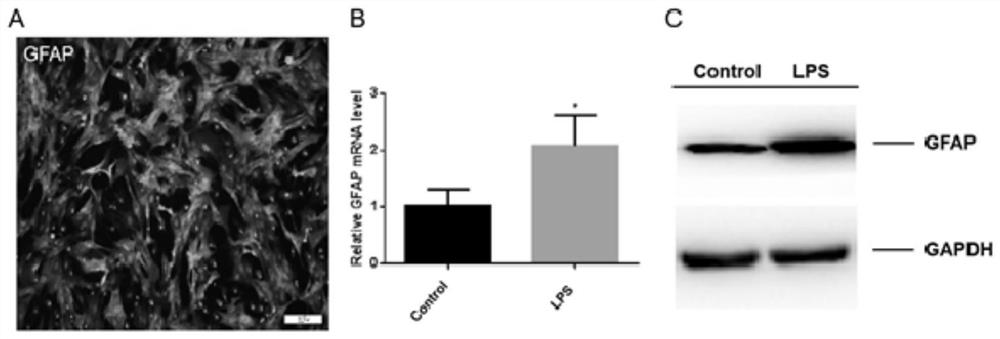Application of polypyrimidine sequence binding protein in preparation of drugs for repairing spinal cord injury
A technology combining proteins and polypyrimidines, applied in the field of biomedicine, can solve the problems of difficult tissue repair and functional reconstruction of SCI, limited neuron regeneration ability, and insufficient replenishment of neurons, and achieve good spinal cord injury repair and functional reconstruction. effect of effect
- Summary
- Abstract
- Description
- Claims
- Application Information
AI Technical Summary
Problems solved by technology
Method used
Image
Examples
Embodiment 1
[0019] 1. Obtain high-purity mouse spinal cord astrocytes from primary culture
[0020] Spinal cord tissue was obtained from neonatal mice. Place the spinal cord in a petri dish filled with ice D-Hanks solution and wash it twice, use microsurgical tweezers to carefully peel off the meninges and blood vessels on the surface, rinse it 2-3 times with D-Hanks solution, and transfer it to another dish. In a petri dish, cut up the spinal cord until it was chyle-shaped, transfer the chopped spinal cord pieces in the petri dish into a 15 mL centrifuge tube, then add an equal amount of 0.25% trypsin, and digest in a water bath at 37°C for 15 min, every 5 min Pipette and mix until there is no obvious tissue block, then add twice the amount of 10% FBS complete medium to stop the digestion of the enzyme; centrifuge at 1000 rpm for 5 min, then discard the supernatant, collect the cell pellet, and then use 5 mL basic The medium was used to resuspend the cells, and the centrifugation was re...
PUM
| Property | Measurement | Unit |
|---|---|---|
| Concentration | aaaaa | aaaaa |
Abstract
Description
Claims
Application Information
 Login to View More
Login to View More - R&D
- Intellectual Property
- Life Sciences
- Materials
- Tech Scout
- Unparalleled Data Quality
- Higher Quality Content
- 60% Fewer Hallucinations
Browse by: Latest US Patents, China's latest patents, Technical Efficacy Thesaurus, Application Domain, Technology Topic, Popular Technical Reports.
© 2025 PatSnap. All rights reserved.Legal|Privacy policy|Modern Slavery Act Transparency Statement|Sitemap|About US| Contact US: help@patsnap.com



